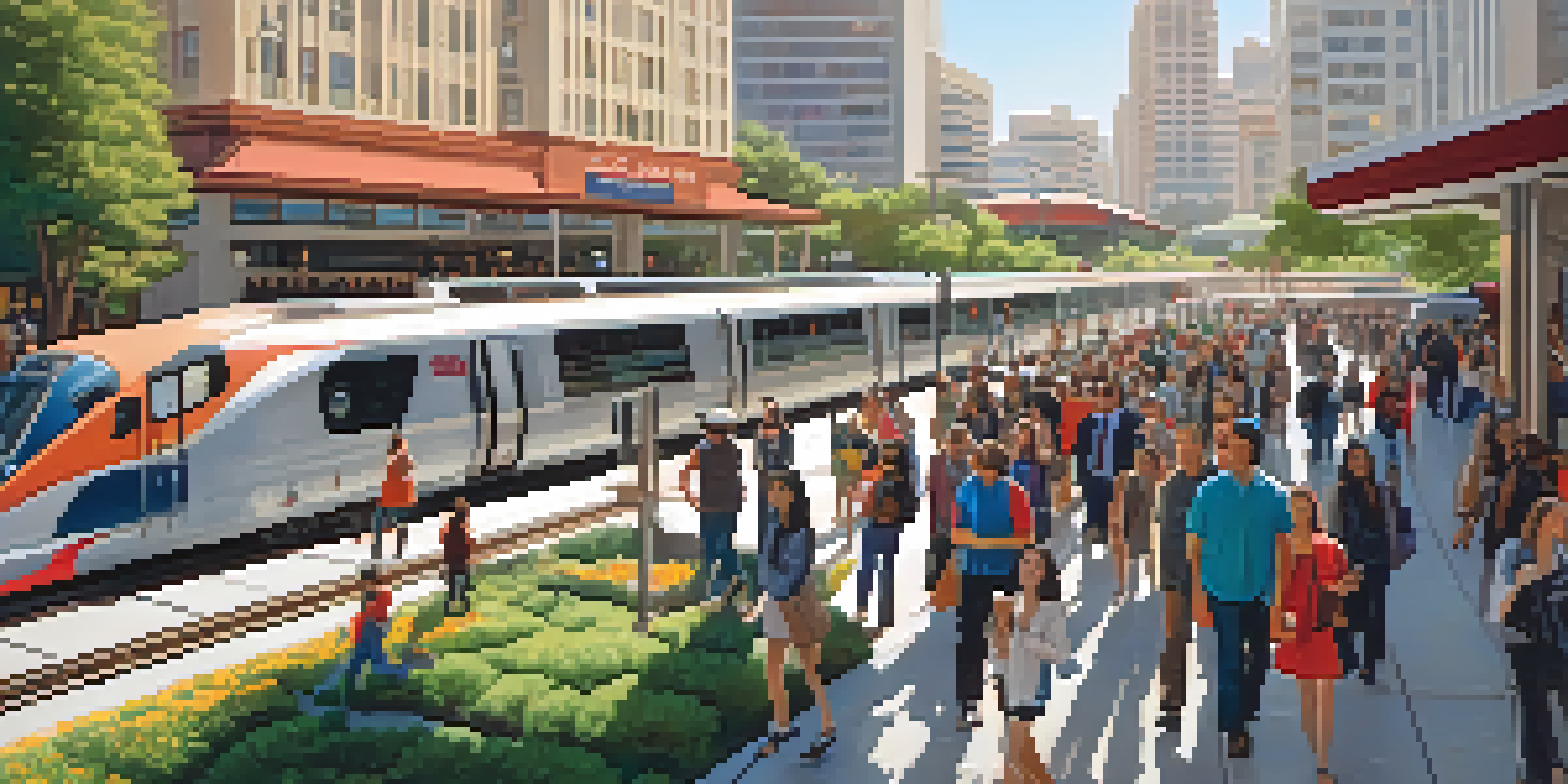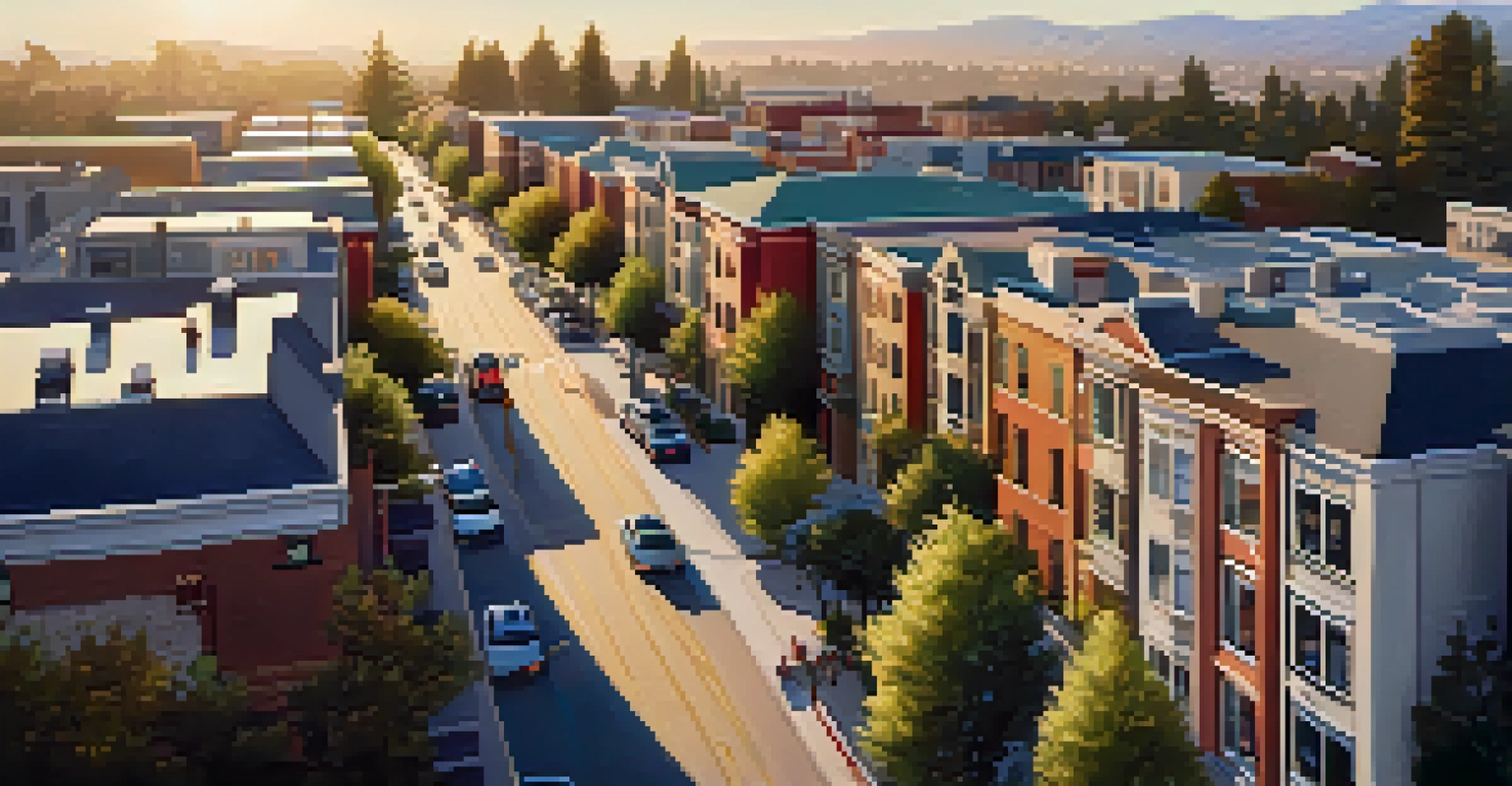The Role of Public Transport in Redwood City Real Estate

Understanding Redwood City's Public Transport Landscape
Redwood City boasts a diverse public transport system that includes buses, trains, and shuttles. This network connects residents to key areas throughout the Bay Area, making commuting more convenient. The accessibility of public transport plays a significant role in attracting homebuyers and renters alike.
Public transportation is a key factor in urban development and can greatly enhance property values.
For instance, the Caltrain station located in the heart of the city is a major hub that links Redwood City to San Francisco and Silicon Valley. This connection is crucial for professionals who work in tech and need easy access to these job centers. As a result, properties near the station often see higher demand.
Moreover, local bus services extend the reach of public transport, providing options for those who prefer not to drive. This multi-faceted approach to transit enhances the overall appeal of living in Redwood City, ultimately impacting real estate prices and investment potential.
How Public Transport Enhances Property Values
Proximity to public transport is often a key factor in determining property values. Homes located near transit hubs generally command higher prices, as buyers appreciate the convenience. This trend is especially evident in urban areas, where accessibility can significantly influence housing demand.

For example, properties within walking distance of the Caltrain station tend to sell faster and at premium rates. This pattern not only benefits sellers but also investors looking to capitalize on the increasing desirability of these locations. The correlation between transit access and property value is a critical consideration for anyone in the real estate market.
Public Transport Boosts Property Values
Proximity to public transport significantly increases property values, making homes near transit hubs more desirable.
Additionally, neighborhoods with robust public transport options often attract a younger demographic, including professionals and families. This influx of residents can lead to revitalization of areas and further increases in property values, creating a positive feedback loop for the local real estate market.
The Influence of Commute Times on Housing Choices
Commute times play a vital role in housing decisions. With the fast-paced nature of life in the Bay Area, many people prioritize shorter commutes to improve their work-life balance. Public transport options in Redwood City reduce travel times, making the area more attractive to potential buyers.
Sustainability is not just a trend; it is becoming a crucial consideration for homebuyers and urban planners alike.
Residents can easily reach major employment hubs without the stress of driving in traffic, which is a significant selling point. This ease of commuting can sway buyers who might otherwise consider more distant suburbs. As a result, homes near transit lines often become hot commodities in a competitive market.
Moreover, shorter commutes can lead to increased overall satisfaction with one’s living situation. When people spend less time traveling, they have more time to enjoy leisure activities or spend with family, further enhancing the appeal of the Redwood City lifestyle.
Public Transport and Sustainable Living in Redwood City
Sustainability is becoming increasingly important for many homebuyers, and public transport plays a crucial role in this trend. By using mass transit rather than personal vehicles, residents can significantly reduce their carbon footprint. This shift toward greener living is appealing to environmentally-conscious buyers.
Redwood City's commitment to expanding its public transport options aligns with broader sustainability goals. Initiatives aimed at improving rail and bus services foster a culture of public transit use, encouraging people to leave their cars at home. This not only helps the environment but also makes the city a more attractive place to live.
Commute Times Influence Buyer Choices
Shorter commute times through public transport options enhance the appeal of Redwood City for potential homebuyers.
Furthermore, neighborhoods with strong public transport links often see an increase in community engagement. As more people utilize these services, local businesses thrive, creating a vibrant atmosphere that appeals to potential homebuyers looking for a sense of community.
The Role of Public Transport in Urban Development
Public transport is a driving force behind urban development in Redwood City. As the city invests in expanding its transit infrastructure, new residential and commercial projects are emerging around transit nodes. This development not only modernizes the city but also attracts new residents and businesses.
For example, developers often seek locations near public transport for their projects, knowing that these areas will draw interest. This trend leads to a more integrated urban landscape where transport, housing, and commerce coexist harmoniously. The result is a thriving community that meets the needs of its residents.
Additionally, well-planned public transport systems encourage mixed-use developments. By creating spaces where people can live, work, and play all within reach of transit, Redwood City is fostering a dynamic environment that appeals to a diverse range of residents.
Challenges and Considerations for Public Transport Expansion
While the benefits of public transport are clear, there are challenges to consider. Funding for public transport expansion can be a significant hurdle, as it requires substantial investment from both the city and state. Budget constraints can slow down the development of new transit options, impacting real estate growth.
Moreover, community resistance can arise when new transport projects are proposed. Some residents may worry about noise, traffic, or changes to their neighborhoods. Addressing these concerns requires open communication and collaboration between city planners and the community to ensure that everyone feels heard.
Sustainability Drives Transit Demand
The growing emphasis on sustainable living makes public transport an attractive option for environmentally-conscious buyers.
Despite these challenges, the potential for public transport to enhance real estate markets remains strong. By overcoming obstacles and continuing to invest in transit solutions, Redwood City can create a more connected, vibrant community that benefits everyone.
Looking Ahead: The Future of Public Transport and Real Estate
As Redwood City continues to grow, the role of public transport in real estate will likely increase. With ongoing development projects and a focus on sustainability, the city is poised to become a beacon for those seeking a convenient and eco-friendly lifestyle. The real estate market will undoubtedly reflect these shifts.
Investors and homebuyers will need to stay informed about public transport developments, as these changes can significantly impact property values. Keeping an eye on upcoming transit projects can provide valuable insights into future real estate opportunities. This proactive approach will empower buyers to make informed decisions.

In conclusion, public transport is not just a convenience; it is a fundamental aspect of Redwood City's real estate landscape. As the city invests in its transit infrastructure, the implications for property values, community dynamics, and overall quality of life will be profound, shaping the future of the region.